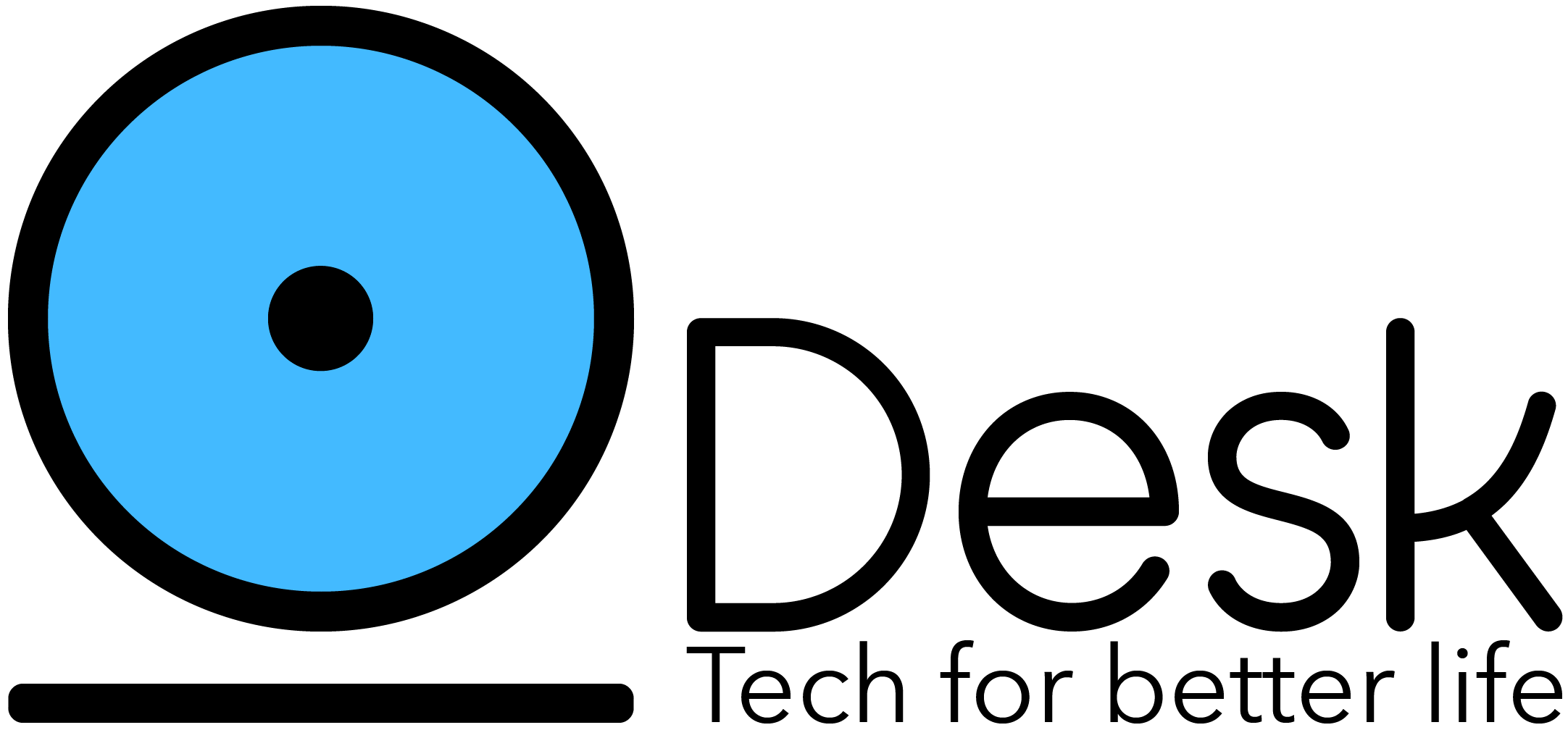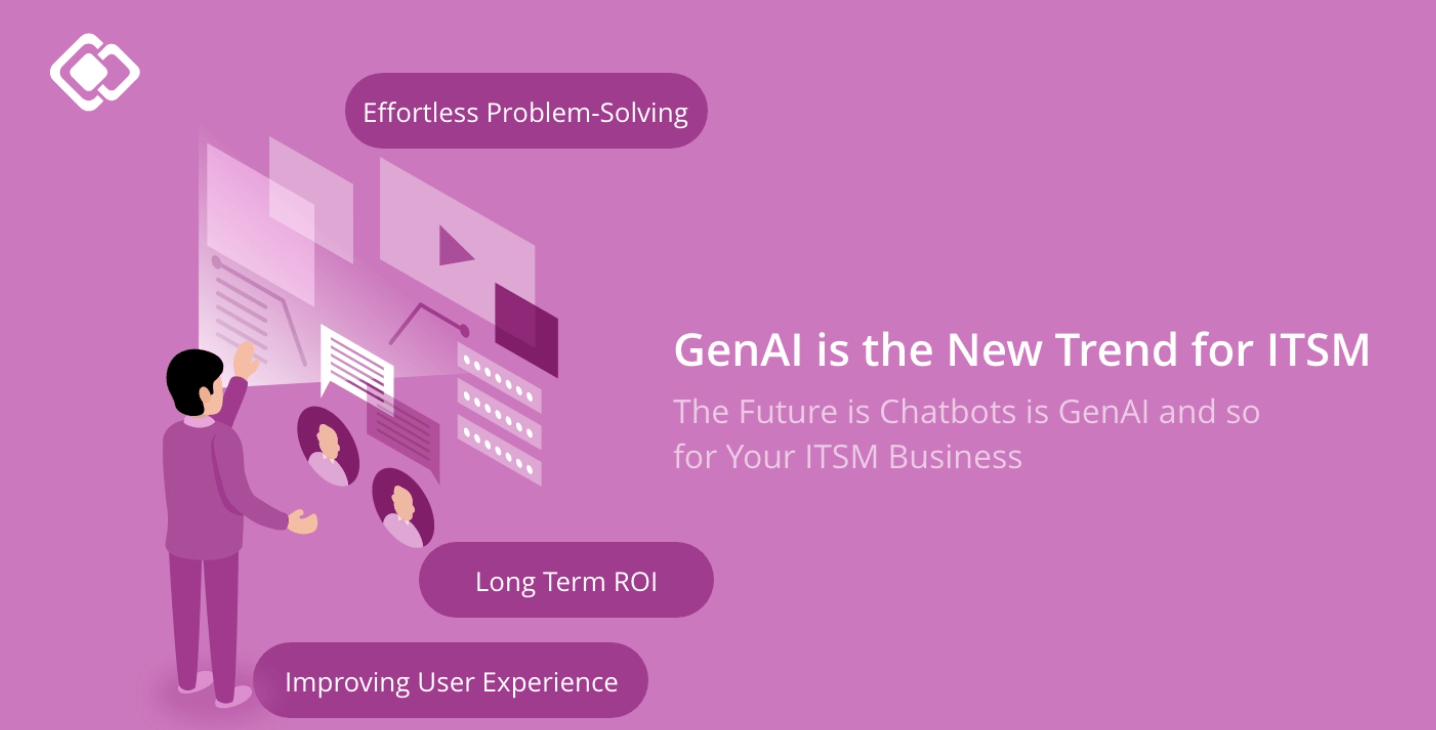Transforming ITSM with GenAI: The Future of Chatbots
Efficient IT service management (ITSM) plays an important role in driving digital transformation and development within organizations. As companies aim to automate more of their processes, an effective ITSM system becomes essential for employee satisfaction, and all of this while reducing costs.
According to McKinsey, automating tasks could replace 45% of paid activities, which translates to $2 trillion in annual wages.
The process automation industry was valued at $2.9 billion in 2021, a significant increase from just $250 million in the previous five years.
According to a Forbes report, leading companies have earned about four times what they invested in service automation.
A NASSCOM report highlights that automation leads to more than 65% savings in onshore operations and 30% in offshore delivery with companies recovering their investment in just six months.
Also, Deloitte predicts that if these trends continue, process automation will become universally adopted within the next five years.
By automating ITSM, organizations can significantly increase operational efficiency and overall productivity. Automation helps streamline processes and eliminates simple, repetitive manual tasks. This not only reduces costs and speeds up operations but also allows employees to focus on more important business activities.
In this blog, you will learn about how GenAI is transforming ITSM and adding futuristic chatbots to your business.
Understanding the AI in ITSM
IT service management, or ITSM, is all about the methods and steps IT teams use to manage and deliver IT services from start to finish. This covers everything needed to plan, create, deliver, and maintain those services.
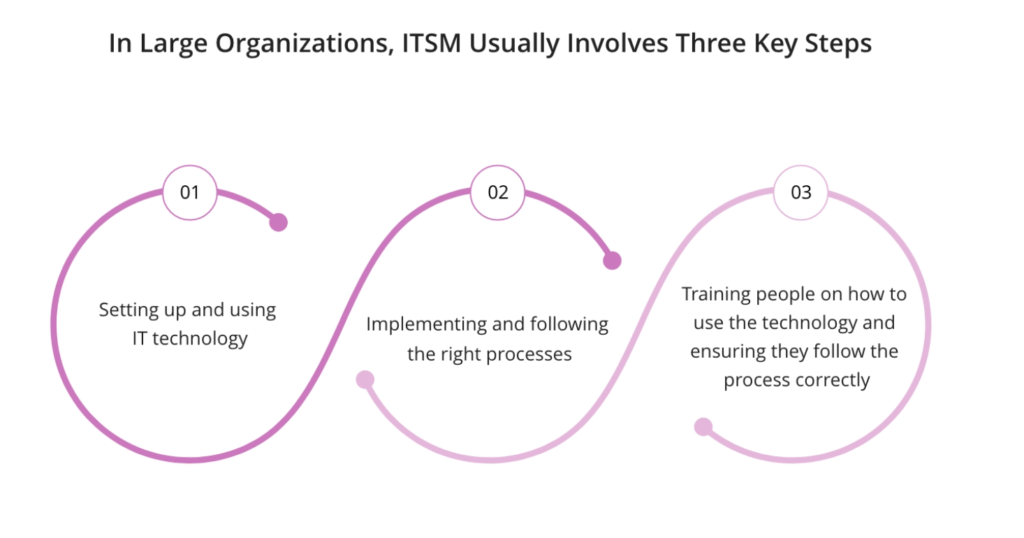
For example, if an employee needs a new laptop, they would usually put in a request through the company’s internal IT system. This request, which is often called a ticket, includes all the details needed and starts a standard process. The IT team then receives the request, prioritizes it based on how urgent it is, and takes care of it accordingly.
ITSM teams manage all kinds of technology used in the workplace, such as laptops, servers, and essential software. Big companies like Google or Amazon, for instance, manage IT systems and applications that are important to their business.
In large organizations, ITSM usually involves three key steps
- Setting up and using IT technology
- Implementing and following the right processes
- Training people on how to use the technology and ensuring they follow the process correctly
How Does RAG Solution Work?
Large Language Models (LLM) like those in the GPT series are incredibly powerful, but they have some limitations. For instance, they might not be aware of specific topics if they haven’t been trained on the most recent data.
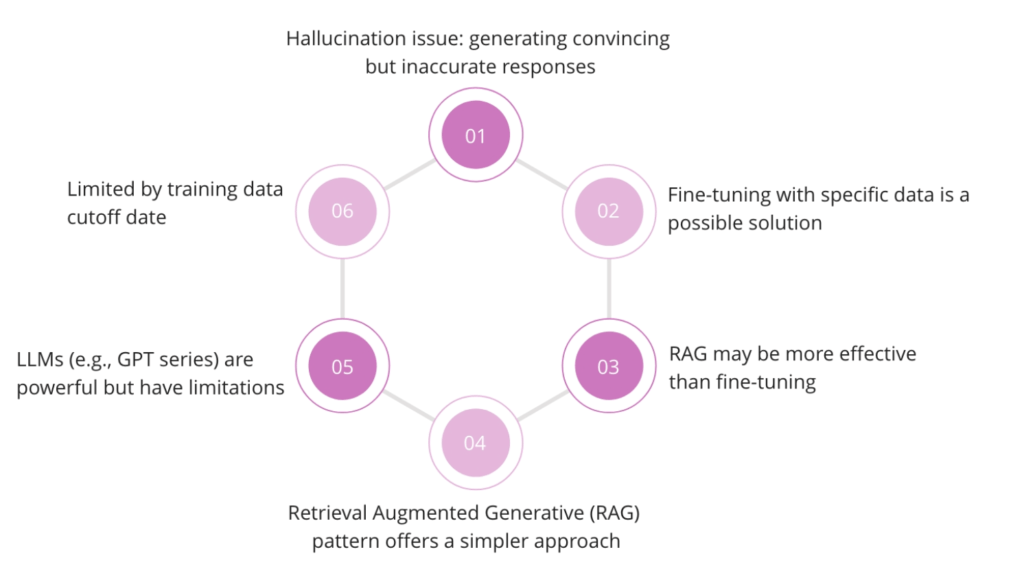
For example, if you ask them about the latest updates in a niche software that came out after their last training, they might not have the answer.
Another challenge is something called “hallucination,” where the model might generate responses that sound convincing but are inaccurate or misleading. For example, an LLM might make up details about software features if it does not have the right information.
One solution to these issues is fine-tuning the model with specific data. However, the process can be both time-consuming and expensive. A simpler and more effective approach is the Retrieval Augmented Generative (RAG) pattern.
The Power of GenerativeAI Chatbot Development
GenerativeAI Chatbot development enhances the knowledge of Large Language Models (LLMs) by adding extra data. For example, an IT support chatbot using RAG can access historical ticket information or external websites to provide accurate and up-to-date answers.
RAG has two main components:
- Indexing: This step involves collecting and organizing data from various sources so the system can easily access and use it.
- Retrieval and Generation: This is a two-step process
- Retrieval: When a user asks a question, the system first searches a dedicated database or index to find relevant documents or information. This ensures that the model uses the most accurate and current data.
- Generation: The retrieved information is then combined with the user’s query and fed into the LLM. The model uses this enhanced input to generate a response that is both informed and natural-sounding.
TechAhead has also taken this whole GenAI chatbot theory and helped their one client create an amazing mobile application, you can read the whole case study on “Unchecked Fitness” to understand more about the whole application.
In simpler terms, RAG helps LLMs improve their answers by pulling in additional information, eliminating the need for complex fine-tuning and retaining. This makes it easier and more cost-effective to implement.
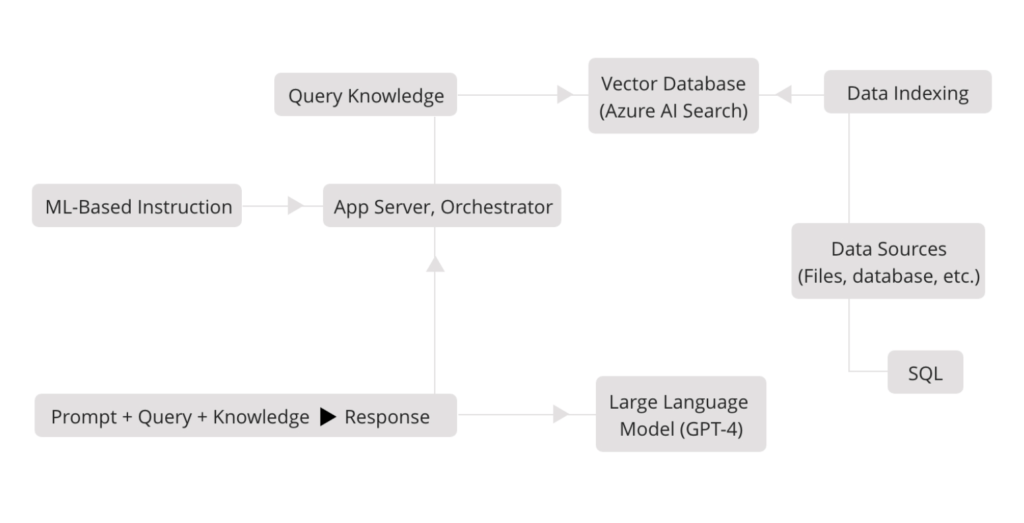
In a RAG system, like one enabled by Azure AI Search, a user’s query is processed by an app server that searches the Azure AI Search Vector database. The relevant documents are then passed to an LLM, which generates a comprehensive response.
Benefits of ITSM Automation
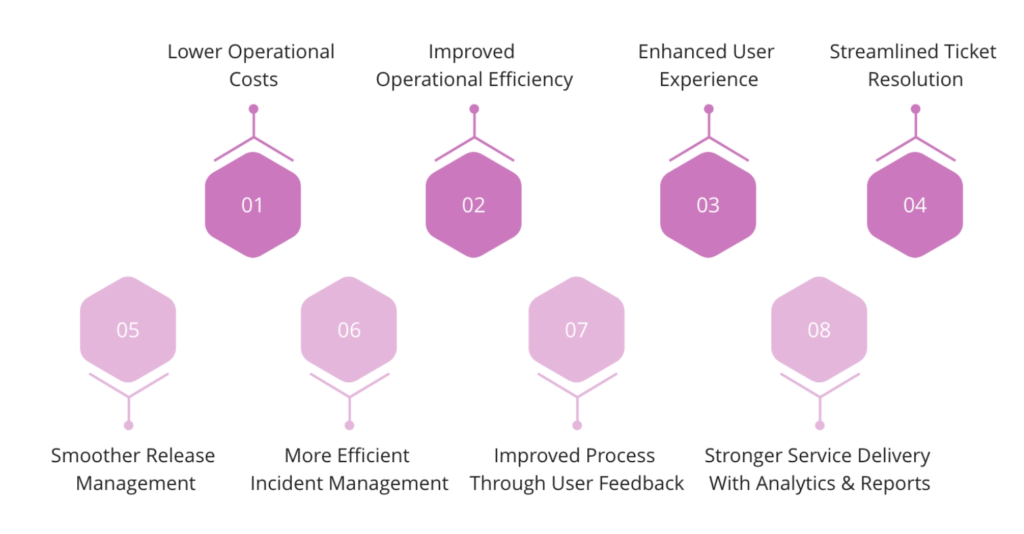
Lower Operational Costs
ITSM automation helps organizational costs by significantly reducing the manual work involved in repetitive IT tasks. The automation’s high accuracy ensures that errors are minimized, eliminating the need for rework and contributing to overall savings.
Improved Operational Efficiency
Automation speeds up tasks, processes, and final delivery while maintaining high accuracy. It also provides flexibility to adapt and change existing processes.
With automation handling routine tasks, survival desk technicians and IT professionals can focus more on important, project-specific, or customer-related work, leading to higher levels of customer satisfaction.
Enhanced User Experience
Automation offers 24/7 availability, eliminates error, and speeds up ticket resolution and service delivery, by providing user experience with a more engaging and satisfying experience.
Streamlined Ticket Resolution
When tickets are sent to the service desk, it is essential they reach the right person on the first try. Automated workflows ensure that tickets are handled accurately and efficiently each time, reducing the time needed to resolve them and improving the overall efficiency of the process.
Smoother Release Management
Automating network operations reduces the stress associated with product or application releases. This automation improves coordination between the mobile app development team and IT. It also leads to a smoother operation with less friction.
More Efficient Incident Management
Traditionally, IT service technicians spend a lot of time investigating the root causes of incidents. With ITSM automation, this process becomes much easier as technicians gain system-level insights into incidents, enabling them to quickly identify and resolve issues.
Automation platforms can also flag major incidents and automatically escalate them to the right people for faster resolution.
Improved Process Through User Feedback
Automation allows organizations to collect anonymous feedback from both those submitting tickets and those resolving them. Higher management can use these insights to identify and fix weaknesses in the system, leading to continuous improvement.
Stronger Service Delivery With Analytics and Reports
Analytics and reporting are important for identifying areas that need attention in the overall workflow. ITSM automation captures and stores historical data and provides powerful reporting tools that help visualize trends. These actionable insights enable organizations to develop stronger, more effective service delivery strategies.
Steps to Get Your ITSM Integrate With GenerativeAI Chatbot Development
Your ITSM integrating with GenAI chatbot development can be a game changer if done correctly. Here are key steps to ensure success:
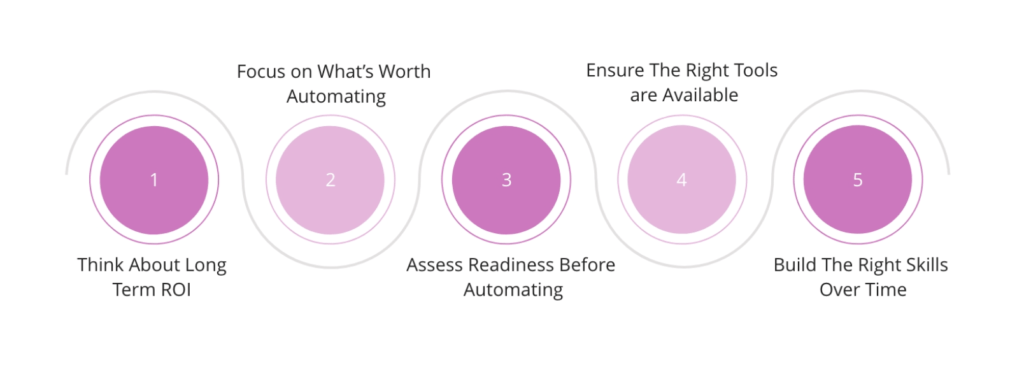
1. Think About Long Term ROI
The impressive benefits of automation can make it tempting to jump in right away. However, it is important to evaluate the potential return on investment (ROI) over the long term.
consider factors like execution speed, operational costs, error reduction, and how much time your workforce will save by focusing on critical tasks. Weigh these benefits against the costs before moving forward.
2. Focus on What’s Worth Automating
Start by identifying tasks that are highly repetitive with predictable variations. If these tasks and their variations can be easily defined and mapped out, and the outcomes are consistent, then they are good candidates for automation.
3. Assess Readiness Before Automating
Before automating, ensure that the tasks are well-defined and mapped and that their variations are fully understood. If processes currently require a lot of manual work, lack transparency, or produce inconsistent results. You may need to revisit and refine these processes before automating them.
4. Ensure The Right Tools Are Available
Using tools that don’t align with your needs or are unsuitable for specific tasks can lead to frustration and failure. Make sure the technology you choose fits your organization’s requirements well to avoid setbacks in your automation efforts.
5. Build the Right Skills Over Time
Experienced ITSM professionals know the risks of focusing too narrowly on local optimization, and the same applies to automation. Organizations need people with the right skills, such as design expertise, understanding of organizational goals, foresight, and logical reasoning.
Automation will only be successful if you have a team with the appropriate skills in place.
How GenerativeAI Chatbot Development Benefits Your Business?
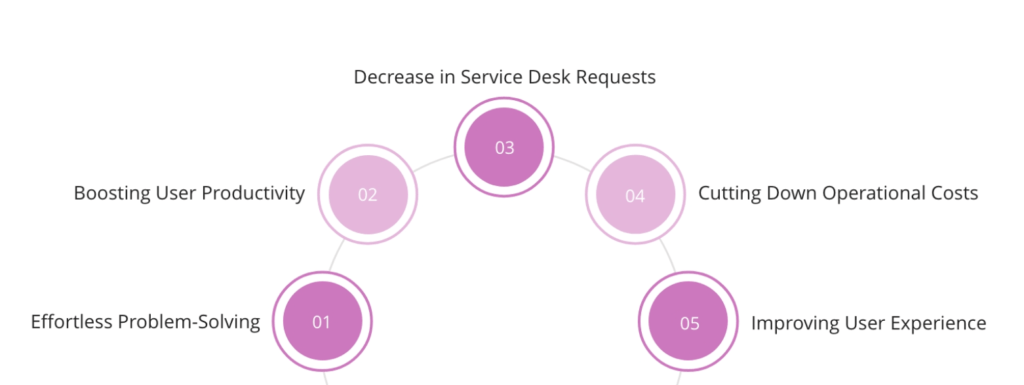
Effortless Problem-Solving
Generative AI chatbot development solves IT issues much more simply by helping create vast and detailed knowledge bases. This means when employees encounter problems. They can quickly find the information they need to fix things themselves.
Imagine an AI app developer who knows almost everything about your business’s IT systems. It is like having an expert available 24/7 to guide users through issues.
- By boosting the ability to self-help
- Employees can solve problems faster
- Reducing the need to wait for IT support.
This not only speeds up resolution times but also leads to more satisfied users who feel empowered to handle technical hiccups on their own.
Boosting User Productivity
Generative AI chatbot development can have the ability to learn without supervision. That significantly improves how it understands what users are searching for. This means that when someone is looking for specific information, the AI transformation can quickly identify what they need, making the search process fast and efficient.
Imagine typing a question and instantly getting the exact answer you are looking for. This boosts productivity because employees spend less time searching and more time doing their actual work by removing obstacles in the search process. The AI in industry helps users work more efficiently, leading to better overall performance.
Decrease in Service Desk Requests
GenAI development handles common IT support questions by engaging in natural, human-like conversations with users. This ability allows users to solve simple issues on their own without needing to submit a help request to the IT service desk.
For example, if someone’s printer is not working, the AI can guide them through troubleshooting steps in real-time. This reduces the number of service requests that IT staff have to deal with, freeing them up to focus on more complex issues. As a result, the workload on IT teams decreases, and users experience faster resolutions.
Cutting Down Operational Costs
Generative AI chatbot development helps reduce operational costs by automating routine IT support tasks. Instead of relying heavily on human agents to provide assistance, GenAI can handle many tasks autonomously, such as answering common questions or guiding users through simple fixes. This reduces the need for a large IT support team and cuts down on training costs for new agents.
Additionally, the money saved can be reallocated to other important areas, such as improving IT systems or enhancing the overall user experience. In the long run, this automation leads to significant cost savings for businesses.
Improving User Experience
Generative AI chatbot development makes the IT support experience smoother and more user-friendly by enabling users to resolve issues on their own. The AI transformation can understand and respond to users in a way that feels natural, similar to how a human would. This interactive approach makes it easier for users to get the help they need without feeling frustrated or lost.
As a result, more people are likely to use IT support systems. It all leads to higher adoption rates. By making the process of getting help quick and easy, genAI enhances the overall experience for users.
Conclusion
GenAI chatbots that are powered by Large Language Models (LLMs) and Retrieval Augmented Generation (RAG) are transforming ITSM. The integration of genAI into ITSM is transforming how organizations handle their IT services. This guide has shown how AI-driven technologies are boosting efficiency, cutting costs, and fundamentally changing IT support.
By understanding and adopting these advanced AI concepts, IT professionals, managers, and decision-makers can stay ahead of the game. AI can be used to predict and prevent issues, automate routine tasks, and enhance the user experience. The potential of AI in ITSM is vast, from AI-powered analytics and predictive maintenance to intelligent triaging and conversational AI.
As technology continues to evolve, it is important for organizations to embrace these innovations, ensuring their ITSM processes are not only efficient but will lead to better service quality, higher user satisfaction, and greater overall success.
The journey to a fully AI-integrated ITSM is ongoing, requiring continuous learning and adaptation. However, with the right knowledge and tools, organizations can leverage Generative AI to create a smarter, more responsive, and efficient IT service environment.
Source: techaheadcorp
